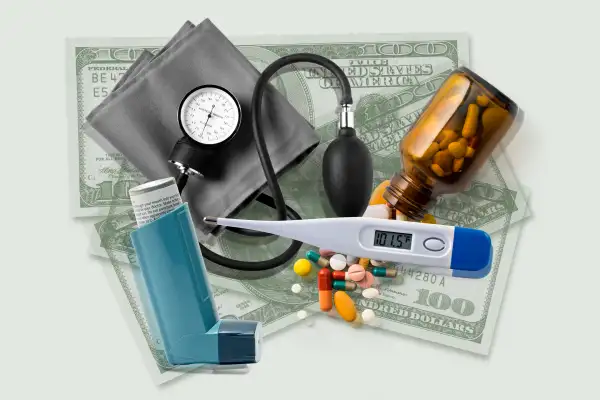Here's Why You Need to Check Your FSA Balance ASAP

The deadline to use the money in your flexible spending account (FSA) could be approaching, and you may be surprised by how much money you have to use up by year end.
A FSA is an employer-sponsored account that allows you to put aside tax-free dollars for eligible health care costs. The IRS allowed account holders to add $2,750 to health FSAs for 2021. Unlike funds in a health savings account, funds in an FSA typically expire annually, so you lose them if you don't use them.
But this year is different: Because of changes made in legislation at the start of the pandemic, you might have money from 2020 to spend as well. Yet data based on responses from more than 2,200 consumers who visited FSAstore.com in early September shows that 50% of account holders are not confident that they understand the deadline changes.
Here’s what you need to know about using up the money you have before it’s too late.
Check your FSA deadline
Money in a health spending account (HSA) — another type of plan that allows you to set aside pre-tax money — will keep rolling over year to year, and you can use it all the way through retirement. But funds in an FSA won’t, so you need to be aware of when your FSA deadline is, or you’ll lose the money you set aside.
For many plans, that deadline is Dec. 31. But this year, that Dec. 31 deadline might also apply to funds you added to your 2020 FSA.
Employers typically have the option to implement a grace period, allowing their employees an extra 2.5 months to spend their FSA money. But the Consolidated Appropriations Act (CAA) extended the grace period to 12 months for 2020, meaning that if your employer opted in, you may have until December 2021 to spend the funds you added for 2020. That means you could have a Dec. 31 deadline to spend 2020 FSA funds, and a mid-March deadline for 2021 funds.
Employers can typically allow their employees to rollover $550 of their FSA funds to the next plan year, but the legislation said employers could allow rollovers of all FSA funds for plan years ending in 2020 or 2021. If your employer granted a rollover last year, you may have even more funds to spend than you think.
Employers can offer a grace period or rollover, but not both. And they don't have to offer either.
“Hopefully going into open enrollment, people are paying attention to what their deadline is, how much money they have left and how much money they're going to have in the following year,” says Rachel Rouleau, vice president of compliance at Health-E Commerce, the parent brand of FSAstore.com.
FSA account holders need to be sure to check with their employers to see what changes — if any — were enacted. And keep in mind that while plans typically run from Jan. 1 until the end of the calendar year, plans can start at any time.
Make sure to buy eligible products before the deadline
Americans lose more than $400 million a year by not spending all the money they put into their FSAs, Rida Wong, president of Health-E Commerce, previously told Money.
A lot of that is due to the fact that they simply don’t understand what can be covered with their FSA funds.
During the pandemic, there have also been changes to what you can spend FSA funds on, and these remain in effect. Personal protective equipment (PPE) for “the primary purpose of preventing the spread” of COVID-19 — like face masks, gloves and hand sanitizer — became eligible to be paid or reimbursed through FSAs, as did at-home COVID-19 tests.
The CARES Act made menstrual hygiene products like tampons and pads, as well as over-the-counter medications like Ibuprofen, eligible. (You could get reimbursed for those medications before the CARES Act, but you needed a doctor’s note. The legislation removed that step.)
You can also head to FSAstore.com’s eligibility list to determine which items are eligible for reimbursement. And poke around for services and items you might not expect, like acupuncture and sunscreen, that you can buy before the deadline.
Set yourself up for future success
If you've checked your FSA balance and are shocked to see how much money you have to spend between now and the end of the year, use what you learned to decide how much to contribute to your plan for next year.
The IRS hasn't announced whether or not there are any changes to how much account holders can contribute to their 2022 FSAs. But once you're ready to contribute, make sure that if any of the newly eligible products are ones you buy regularly, you factor their cost into your contribution amount. And if it's always a struggle to use up your funds by the deadline, consider contributing less money for next year.
A previous version of this story misstated that the CARES Act provided for FSA deadline extensions. It was the Consolidated Appropriations Act.
More from Money:
Medicare Open Enrollment Just Started, and Here's What's New for 2022
Misleading Headlines About Social Security Could Cost Retirees a Fortune
